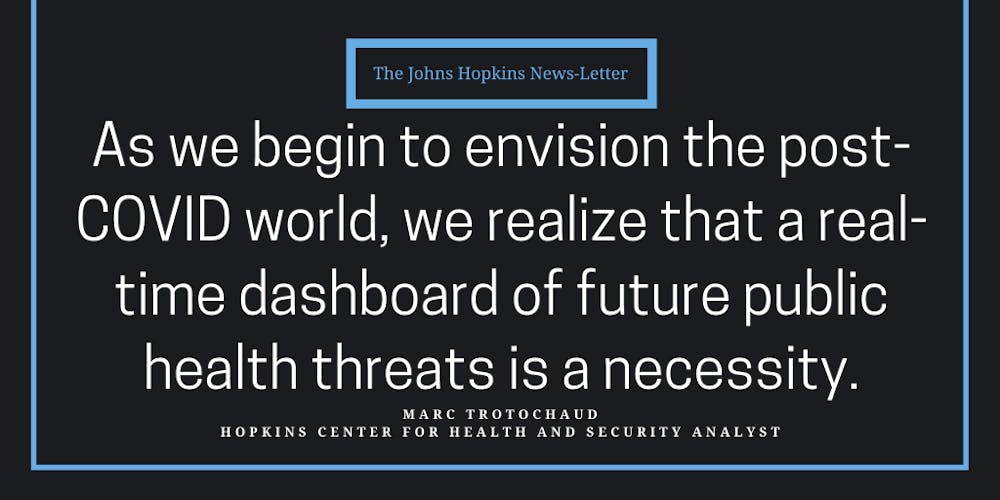1.2 billion. That’s the number of interactions the Hopkins Coronavirus Resource Center receives daily, according to an article by New York Magazine.
The website has become the preferred choice of epidemiological information for news media throughout the world. It sprung from the work of first-year graduate student, Ensheng Dong, who began tracking the virus in late December.
Prior to the coronavirus (COVID-19) pandemic, Dong had been modeling measles outbreaks; however, he quickly pivoted when the virus appeared. Dong enlisted the help of his thesis advisor, Lauren Gardner, who is the co-director of the Center for Systems Science and Engineering (CSSE) and a professor of civil and systems engineering. Together, the pair released the online dashboard on Jan. 22.
The website is now maintained by over two dozen people at the CSSE, with technical support from the Hopkins Applied Physics Laboratory and Esri, the company providing the mapping software. The dashboard illustrates the location and number of confirmed COVID-19 cases, deaths and recoveries for all affected countries. Additionally, the website provides city-level reports in the U.S., Canada and Australia.
The objective of the website is to provide researchers, public health authorities and the general public with a tool to accurately track the outbreak as it unfolds. Within days of its release, the site was receiving more than 200 million interactions per day.
From Jan. 22 to Jan. 31, all data collection and processing were done manually, first by Dong and then by students working round-the-clock in shifts. Updates were typically done twice a day, morning and night. Eventually, this approach became unsustainable.
The map now updates semi-automatically throughout the day and the dashboard is fed mostly through automated web-scraping and aggregation, updating nearly in real-time.
The resource center receives data from a wide variety of sources, including the World Health Organization (WHO), the U.S. Centers for Disease Control and Prevention, the European Centre for Disease Prevention and Control, national government health departments, local media reports and Dingxiangyuan — one of the world’s largest online communities for health-care professionals.
Using this multi-faceted approach, the website has consistently reported infections even ahead of the WHO.
The developers have also made the website code, along with all the data collected and displayed, freely available through a GitHub repository. The repository has enabled a global effort to improve the website and user experience. Since February, over 20,000 GitHub users have starred the repository, providing over 2,000 suggestions for refinement.
In an interview with The News-Letter, Andrew Pekosz, a professor at the Bloomberg School of Public Health, highlighted the importance of the Hopkins Coronavirus Resource Center in guiding public health decision making.
“The availability of accurate data is essential to guiding our response here in the U.S., and throughout the world,” Pekosz explained. “Within the U.S., the visualization of data by county can inform the planning of response and containment efforts to reduce the burden of disease.”
Given the popularity and impact of the dashboard to date, the team at CSSE plans to continue hosting and managing the tool throughout the entirety of the COVID-19 outbreak. But they’re not planning to stop once the outbreak is over.
Marc Trotochaud, an analyst with the Hopkins Center for Health and Security, explained the future plans of the Coronavirus Resource Center.
“As we begin to envision the post-COVID world, we realize that a real-time dashboard of future public health threats is a necessity,” Trotochaud said. “The resource center will continue to build out its capabilities to establish a standing tool to monitor and report on future outbreaks.”
These tools may eventually allow public health experts to track illnesses as soon as they appear, thereby improving containment measures. For now, though, the Coronavirus Resource Center continues to inform the public, media and scientists to contain and eliminate COVID-19.





